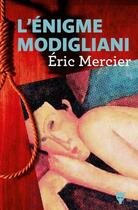-
Date de parution : 30/08/2022
-
Editeur :
Dap Artbook
-
EAN : 9781733688956
-
Série :
(-)
-
Support :
Papier
Résumé:
A long-overdue appreciation of the influential sculpture of Liz Larner and its radically adventurous formal and conceptual vocabulary.
Los Angeles-based sculptor and installation artist Liz Larner (born 1960) was originally a photographer: in some of her earliest projects, she documented the... Voir plus
A long-overdue appreciation of the influential sculpture of Liz Larner and its radically adventurous formal and conceptual vocabulary.
Los Angeles-based sculptor and installation artist Liz Larner (born 1960) was originally a photographer: in some of her earliest projects, she documented the volatility of bacterial cultures in petri dishes. However, she soon realized that she was more compelled by the dishes themselves and how they presented questions about what an art object can entail. Since then, she has continued to pursue her interest in formal unpredictability through a focus on sculpture and architectural space. Composed of a diverse variety of materials, her sculptures frequently function as optical illusions that seem to bend the space around them. Sometimes rigidly technical in their geometry and at other times soft-edged and amorphous, Larner's sculptures are striking both for their fluctuation of form and for their representation of spatial politics.
Repositioning her enduring formal and material concerns alongside her relationship to a feminist sculptural position, this monograph offers an opportunity to consider Larner's artistic project within today's expanded discourses of embodiment, gender and posthumanism, and to recalibrate our understanding of it in relation to male-dominated Postminimalism and installation art, which have often underpinned Larner's critical reception. Poet Ariana Reines, cultural critic and theorist Catherine Liu, and curators Connie Butler and Mary Ceruti consider the physical properties and sociopolitical implications of the materials present in Larner's work, which range from ceramic to steel chain to surgical gauze to human hair.
Donner votre avis















